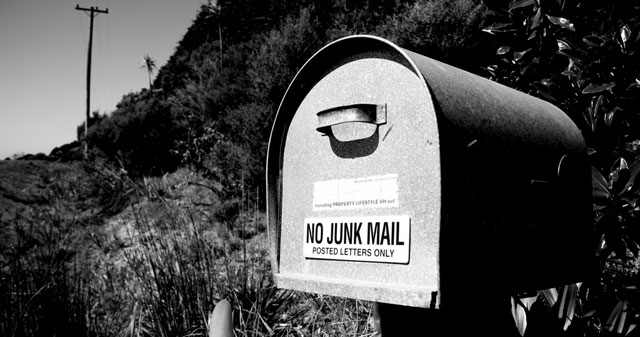Buying mailing lists is often seen as a shortcut to success even though it is illegal in most countries. Building your own mailing list takes time, resources and strategy to be effective – can simply buying a list bypass all this hard work?
Seeing others succeed around you is always a little demotivating.
Who hasn’t looked on in envy at regular gym goers? Wouldn’t it be great if you could just buy the results and skip all those repetitive days of hard work at the gym? Well the unfortunate truth is…
They earned that body and unless there’s a certain substance being used, the appearance wasn’t bought with money but with time, dedication and hard work. There is no quick fix and anyone who tries to sell you one is most likely a scam artist.
The same principle can be applied to email mailing lists. Much how we depend on our own bodies, the email mailing list is the lifeblood of email marketers and the healthier it is, the better it is able to perform.
Building up a mailing list can make you break a sweat. It’s not the easiest task in the world, that’s for sure! That’s why it’s so tempting to just buy a list – a big email marketing no no!
Freeing ourselves from the shackles of morality and swatting that annoying angel off our shoulder, who cares? Why shouldn’t you skip all that hard work and just buy a list of addresses?
All’s fair in love, war and business. While that may be true, doing so will hurt more than help you. So let’s pit bought lists vs earned lists in the ultimate battle of pros and cons!
Bought Lists vs Earned Lists Round 1 – Attracting Clients
Buying a mailing list immediately gives you hundreds if not thousands of email addresses (if you got tens of addresses, what the heck are you spending your money on?!). While building your own list takes time, patience and resources.
Seems pretty clear cut right? But more is happening under the surface that is not immediately noticed. For example, you’re sending out thousands of emails a day to people who aren’t expecting your mail – and chances are, they don’t want them either.
This leads people to ignore your mail, delete it or even report it as spam! Essentially you are wasting your money and ruining your sender reputation as a bonus.
On the other hand, earned lists consist of people who have opted in and are expecting your email which means more clicks, customers and cash! Although you have taken the time to build the list, once you have that list you have a higher chance of people responding positively to your email.
Good things do indeed come to those who wait. The winner here is definitely earned lists.
Bought Lists vs Earned Lists Round 2 – Keeping Clients
As seen above, bought lists do not guarantee clients – it’s a flimsy gamble at best. However, let’s say the email marketing Gods smile favourably, shine their fluorescent LCD lights upon you and you manage to obtain some clients.
Even if this unlikely event is to occur, you won’t be able to hold on to your clients for very long.
Ignoring the fact that your emails will be marked as spam, bought lists contain many email addresses that have long become inactive.
Imagine if these abandoned addresses could become haunted…
Email clients such as Gmail and Yahoo identify these inactive accounts and create spam traps for emails that are constantly sent to that address. Anybody that hits enough inactive accounts and spam traps is automatically marked as a spammer and the sender address is penalized on their send reputation and sender score. Get a bad enough score and you’re likely to be blacklisted and unable to effectively use email marketing anymore.
The worst part is if you are using a bought list you can be penalized multiple times with one email send, as you have never dealt with the addresses in question before.
Being blacklisted before you know it can make anyone’s tea taste sour. Earned lists will always lose subscribers one way or another – it just happens. The difference is that involves an action on the part of the client, or the address would bounce before it becomes a spam trap. Which means you will never be caught with a haunted spam trap unless you are extremely negligent
Hating on the inactives? Earned lists all the way.
Bought Lists vs Earned Lists Round 3 – Closing the Deal
At the end of the day, the point that matters is if you make a sale and close the deal.
After all is said and done, it’s easier to cry in a cadillac than on a bicycle but in this case the good guy gets the girl as well as the cadillac!
People only sell email lists once they have done two things – shredded the list to earn as much money as they can make themselves and then sold it to as many people as they can to squeeze any value out of the list.
Think about it. Would you sell a list of valuable contacts if you could benefit from them yourself? Of course not. So why would anyone else?
The truth is your email will be one of hundreds in an inbox that was unfortunately sold on a list to not only you, but hundreds of other marketers. It’s really doubtful that an owner of that inbox is extremely bored and will read through each and every mail, but you know what’s easier?
Marking it all as spam and deleting the lot.
What’s more, no quality email service provider will allow you to use a bought list – the shared IP address will get a bad reputation and will end up getting marked as a spammer. No good ESP will take spammers. Think about it, would you as a legitimate sender want to be on the same platform as spammers?
Clients who have opted in and are waiting for your mail have already displayed some interest in your product or service, so it makes perfect sense to sell to those who are interested.
Earning your own mailing list will earn you sales, trust and good karma. Now that’s a deal closer!
It’s fair to say that if you care about deliverability, morality and money you should stick to building your own list rather than taking shortcuts that leave you shortchanged. Stay tuned for tips on how to build a healthy mailing list and kickstart your campaign into overdrive!
Image via Ari Davidson







